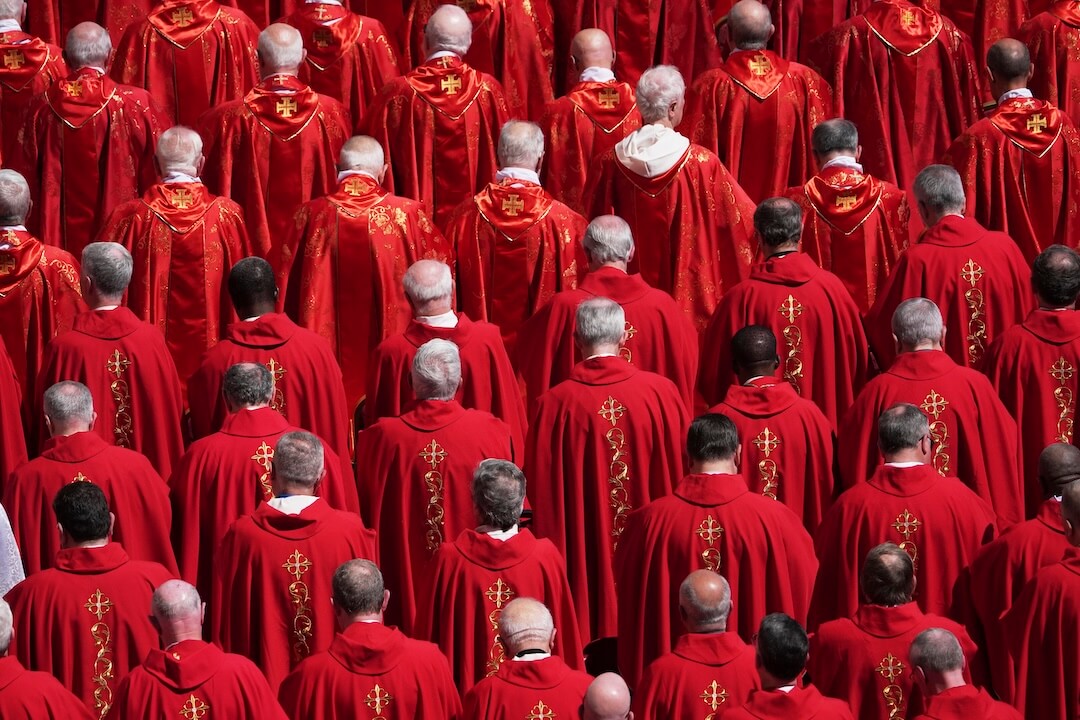CHICAGO — As I was preparing to cover the Democratic National Convention here this week, I pondered a nagging question: What makes a good convention — at least from a journalist’s perspective?
In addition to organizing my own thoughts on this question — based on my experience covering 15 conventions in person since 1988 — I reached out to a few of my journalist colleagues who have regularly experienced the wringer of covering a party convention.
“The best conventions have a combination of factors going for them: proximity, weather and news,” said Rick Klein, the Washington bureau chief for ABC News, who has covered 10 conventions in person since 2004. “You end up spending a lot of time getting to and from and in and out of the convention site itself, so not being sweaty or spending hours on buses to hotels puts everyone in a better mood.”
Which type of city is best?
Broadly, my colleagues and I agreed that good logistics are paramount for making a successful convention from the journalist’s perspective. But we disagreed a bit on whether big or mid-size cities are better positioned to ease the key logistical concerns.
Personally, some of my favorite convention sites have been on the smaller side.
The 1996 Republican convention in San Diego wasn’t all that newsy — it nominated Bob Dole and Jack Kemp, who went down to a decisive defeat in November — but it remains one of the conventions I remember most fondly. It was held at a convention center close to the city’s Gaslamp Quarter, where you could grab lunch or dinner between official business on the floor. Take a few steps outside the convention center and you could gaze across gorgeous San Diego Bay.
Two recent Republican conventions held in mid-size cities — Cleveland in 2016 and Milwaukee just a few weeks ago — left many journalists like me appreciating, even loving, cities we hadn’t experienced in person for years, if ever. (If you notice a pattern here, Republicans are more able to choose smaller cities for conventions because they have fewer delegates to house than the Democrats do.)
As this year’s Democratic convention approached, I was a little concerned about how well Chicago would be able to handle the festivities — and that was beyond the question of protests, which all but ruined the Democratic confab here in 1968 and which have been prompting concerns this week about protesters clashing over Israel and Palestine.
The reasons Chicago poses greater logistical challenges than Milwaukee, the site of 2024’s other convention, are more prosaic. At this year’s Republican convention, the arena for official business, as well as several large media spaces, were all contained within a single, compact security zone, a setup that minimized the amount of security delays. And many of the “off-campus” events were held near the security zone, easily reachable on foot.
By contrast, Chicago has three main hubs, widely separated. Many delegates and reporters will be staying in or attending events in Chicago’s core, the Loop; they will also be working from or covering Democratic caucus events at the McCormick Place convention center, located at least a half hour south of the Loop, depending on traffic and mode of transport; and for the nightly speeches, they will be going to the United Center, which is a similar distance from the Loop in a different direction, west.
I know from covering the 1996 Democratic convention here that a multipolar convention can work. Even so, I remember spending much time in transit between Chicago’s downtown and the United Center, and my initial forays before the convention’s start have only reinforced that impression. (Sadly, one silver lining of the long taxi rides during the 1996 convention has disappeared: Earlier this year, the Blommer chocolate factory shut down, taking with it the intoxicating aroma that cheered travelers heading out to the United Center.)
Despite my preference for smaller cities, many of the colleagues I queried for this article raised some reasonable points about the advantages of bigger cities like New York, Chicago and Los Angeles.
“With all due respect to the mid-sized cities, which have their charms, the bigger cities simply seem better able to handle the bigger crowds and security challenges,” said Josh Kurtz, the founding editor of the news site Maryland Matters and a veteran of many conventions while working for the newspaper Roll Call. “The downtowns don’t shut down. The transit systems keep running, with only a few interruptions. There are vibrant neighborhoods to escape to, away from the convention tumult.”
Jason Dick, the editor-in-chief of CQ Roll Call, goes so far as to call Chicago an “ideal” locale.
“There are multiple ways to get there, because of the two big airports, O’Hare and Midway,” said Dick, who is covering his fifth convention since 2008. “Once you get there, it’s easy to get around with public transit or multiple taxi and ride services, and there are tons of hotels and Airbnbs.”
By contrast, Dick said, for all of Milwaukee’s charms, “there aren’t a ton of options to get there and back nonstop, and the hotels were spread pretty far.” That last point was certainly accurate: My desire to cover Texas delegation breakfasts at this year’s Republican convention was dashed when GOP honchos assigned Texas’ delegation to stay at a hotel in Madison, a 90-minute drive from Milwaukee.
Where to stay and eat?

The author with Jim Barnes at the 2016 Democratic convention in Philadelphia. (Courtesy of the author)
Jim Barnes — a former colleague of mine at National Journal who has me beat on convention experience, having covered 18 of them between 1984 and 2016 — said he’s experienced “a range of accommodations, from four-star hotels to an Airbnb where I slept on an air mattress next to the kitchen. More important to me than luxury was how close your room was to the convention hall. We’ve all had to endure half-hour-plus drives back to your room at night after a grueling day.”
For reporters and editors, finding nice meals can be hard. In Milwaukee, I enjoyed a memorable Asian fusion meal with my PolitiFact colleague, editor-in-chief Katie Sanders, on the Sunday night before the convention. It was our last proper meal of the week. The final few nights, due to a combination of deadline pressures and a lack of convenient food options, I had little choice but to bring “girl dinner” — cheese, crackers, salami and nuts — into the arena to eat at my seat as I typed.
“Given my work schedule, I rarely had time to hit the bars or go out to dinner at a restaurant, so those never mattered much to me,” Barnes said. Still, he added, “I did always try to find a simple local place to grab a quick lunch. Just getting away from work for a bit to clear your mind was a real tonic.”

Chicago’s legendary Billy Goat Tavern, Aug. 17, 2024. (Louis Jacobson/Poynter)
How is the convention zone designed?
The key to a smoothly running convention “is the correct balance of necessary security and relaxed access to everyone,” said James Pindell, a Boston Globe political reporter who has covered every convention since 2004, minus the virtual COVID-19 conventions of 2020. This type of balance is “good for politicians, delegates, donors and journalists.”
Ken Thomas, a Wall Street Journal reporter who’s covering his sixth convention since 2004, said that amid all the hullabaloo of a convention, the more relaxed a journalist is, the more effective they will be.
“We’re all very busy with our daily coverage, and a smooth process getting from our hotels to the security perimeter and into the convention area means a lot to us,” Thomas said. “There are so many events you’re trying to hit, some inside the security perimeter and some outside, that it makes navigating the convention city a big part of your work.”
Thomas appreciates on-site hubs like the CNN Grill, where sources and journalists can mix off the floor.
“The CNN Grill was really great during the Milwaukee convention,” Thomas said. “I ran into a lot of people there in the early evening and after the speeches.” Getting in, though, is tough; despite multiple entreaties in both Milwaukee and Chicago, PolitiFact has been unable to secure a pass.
One tip from the pros: Don’t bother getting a car, particularly in a city like Chicago that has an extensive transit network.
“If you have a car, you’re worried about how traffic will affect your commute to the convention,” Barnes said. “And that first day you’re always wondering whether the security perimeter has expanded and your route to a parking place suddenly changed overnight.”
In other words, be prepared to hoof it — it’s a plus for timeliness and it gets you exercise, too. Conventions in New York, including 1992 for the Democrats and 2004 for the Republicans, “were always great” for walking places, Barnes said.
What’s the news?

The PolitiFact team at the 2012 Republican convention in Tampa: Molly Moorhead, Aaron Sharockman, Angie Drobnic Holan, Katie Sanders, Bill Adair, the author, and Bridget Hall Grumet. Twelve years later, Sharockman, Sanders and the author will be covering the 2024 convention in Chicago. (Courtesy: PolitiFact)
Since the 1960s, conventions have amounted to splashy infomercials for the party and its nominees. Without “news,” per se, it’s not always obvious what journalists should be writing about.
“There are plenty of important stories at conventions — you just have to dig them up,” Barnes said. “I always felt conventions worked better the sooner I found my ‘convention groove,’ cranking out stories one after another, hoping adrenaline can propel you through the week. I found preparation and forethought were indispensable.”
It helps, of course, to be able to cover a notable speech, such as New York Gov. Mario Cuomo’s Democratic keynote in San Francisco in 1984; Texas state Treasurer Ann Richards’ for the Democrats in Atlanta in 1988; Pat Buchanan’s address for the Republicans in Houston in 1992; Barack Obama’s keynote for the Democrats in Boston in 2004; and Sarah Palin’s vice presidential acceptance speech in St. Paul in 2008.
Other times, a major story can emerge completely out of nowhere. One of my most vivid memories of the Democrats’ 1996 convention here in Chicago was the revelation that Dick Morris, a close adviser to President Bill Clinton, had paid for sex that included toe-sucking; the news ignited an on-the-ground media frenzy like none I’ve seen before or since.
Then, at the 2016 Democratic convention in Philadelphia, I was attending a seemingly routine Florida delegation breakfast when supporters of Bernie Sanders stormed the room to protest one of the speakers, Florida Rep. Debbie Wasserman Schultz, and her role in shaping delegate rules for the convention. They shouted her down and forced her to leave the lectern; within hours, she was ousted from her convention role. The imbroglio foreshadowed the intra-party divisions that doomed Hillary Clinton’s campaign. These are the kinds of events where you really have to be present to fully report them.
Despite the inevitable logistical glitches — from getting soaked in the summer rain to a laptop or phone dying on you at the most inopportune moment — most journalists I know wouldn’t give up the chance to cover a convention for anything.
“By covering a national convention, you’re participating in one of the longest traditions in the political life of our country,” Barnes said. “And you’ll invariably have great war stories to regale your friends with.”







